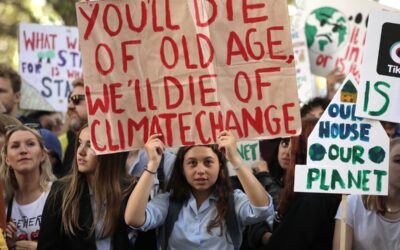Regular readers will know that we’ve been watching food prices rise steadily over the last few months with increasing concern – see the Scarcity category of posts for the backstory, and also this excellent in-depth analysis piece that the FT published last week. Today, the Food and Agriculture Organisation’s head, Jacques Diouf, had some blunt words in an interview with the FT:
“Many [countries] will have to take hard decisions because of the impact of food prices. In some countries there will be price controls, some will scrap import tariffs on food to minimise the impact of rising costs and others will increase food subsidies … If prices continue to rise, I would not be surprised if we began to see food riots,” Mr Diouf said, noting that in the past year, Mexico, Yemen and Burkina Faso had all witnessed social unrest over high food prices.”
Concern at FAO is clearly rising steadily; last week, the FT quoted the head of its grain trading division as saying that “the world is gradually losing the buffer that it used to have to protect against big swings [in the market]. There is a sense of panic.” But Diouf has a plan:
At the FAO’s annual meeting in Rome next month, Mr Diouf will propose a “high-level conference on world food security” that would aim to agree on measures to cool down rising food prices.
Interesting idea – and welcome to see Diouf seeking to raise the political temperature on food prices. But it still leaves the question: how much can an FAO summit on its own really achieve? Step back for a moment and consider what’s actually driving the increase in food prices. Here are Jenny Wiggins and Javier Blas last week in the big FT analysis piece mentioned earlier:
Some of the price rises are the result of temporary problems, such as drought in Australia, and diseases, such as blue-ear in Chinese pigs. But there is a more permanent increase in demand from Asia, as richer populations in China and India demand more protein, and from the biofuel industry, which is on course to consume about 30 per cent of the US corn crop in 2010 – developments that will underpin prices for the medium term. The FAO estimates that those structural new trends will help to push the cost of agricultural commodities in the next decade between 20 and 50 per cent above their last 10-year average.
Problem is, these challenges – droughts, affluence in China and India, demand for biofuels driven by high energy prices – lie well beyond FAO’s sphere of influence. Even if ministers attending the forthcoming FAO summit agreed to cap food costs, it’s highly unlikely they’d be able to deliver it, given the sprawl of drivers at play – just as environment ministers have a bad habit of signing glitzy treaty declarations that then (with a few exceptions like the Montreal Protocol on ozone depleting substances) comprehensively fall down during the implementation phase.
But none of this is to deny that there genuinely is a problem – and one that we can expect to get a lot worse once long term scarcity trends like climate change and water depletion get stirred into the mix. So what should Mr Diouf do?
Here’s a starter for ten. Instead of going all out for a meaningless summit declaration full of warm words, big targets, no new funds and no compliance mechanism, Diouf should start the slow, painstaking process of building shared awareness of the fact that we have a major geopolitical scarcity problem in the post. While the first stirrings of the problem are already clear, he should recognise that building consensus on the nature of the problem could take a decade or more; just consider the fact that eighteen years elapsed between the IPCC’s establishment in 1988 and 2006 when consensus on the reality of climate change really coalesced.
The first step, then, is simply to get the key agencies talking to each other. Anyone who’s spent any time working in international bureaucracies knows that the most fundamental fact about them is that they are organised in silos that don’t talk to each other. The problem is bad enough within individual agencies or government departments; it’s even more serious when two rival agencies work on the same area. But even that is still simple compared to trying to build a relationship between agencies that barely know each other exists.
That’s where we are today with the international agencies who will have to manage the geopolitics of scarce oil, scarce water, scarce food and scarce atmospheric space. Lots of staff at IEA won’t even know what FAO stands for; and vice versa.
So Diouf should go ahead and organise his summit. But he should also organise a retreat for 50 key staff from 50 key agencies relevant to the management of scarcity, and start building the shared awareness that they’ll need in the next few years: mapping the most vulnerable countries, how food scarcity could exacerbate conflict flashpoints, figuring out how currency fluctuations could affect the situation, running scenarios for $150 a barrel oil, reading William Cline’s CGD research on how climate change will affect developing country agricultural productivity, working out what kind of developing country governance frameworks have proved effective at managing local scarcity, devising ways of building scarcity awareness into peacekeeping operations (as DPKO are doing with Darfur)… the list is endless.
Building the barest bones of a common language that all the relevant players can speak may seem a modest first step, especially as the clamour for kneejerk responses builds. But it is an indispensable one too.



